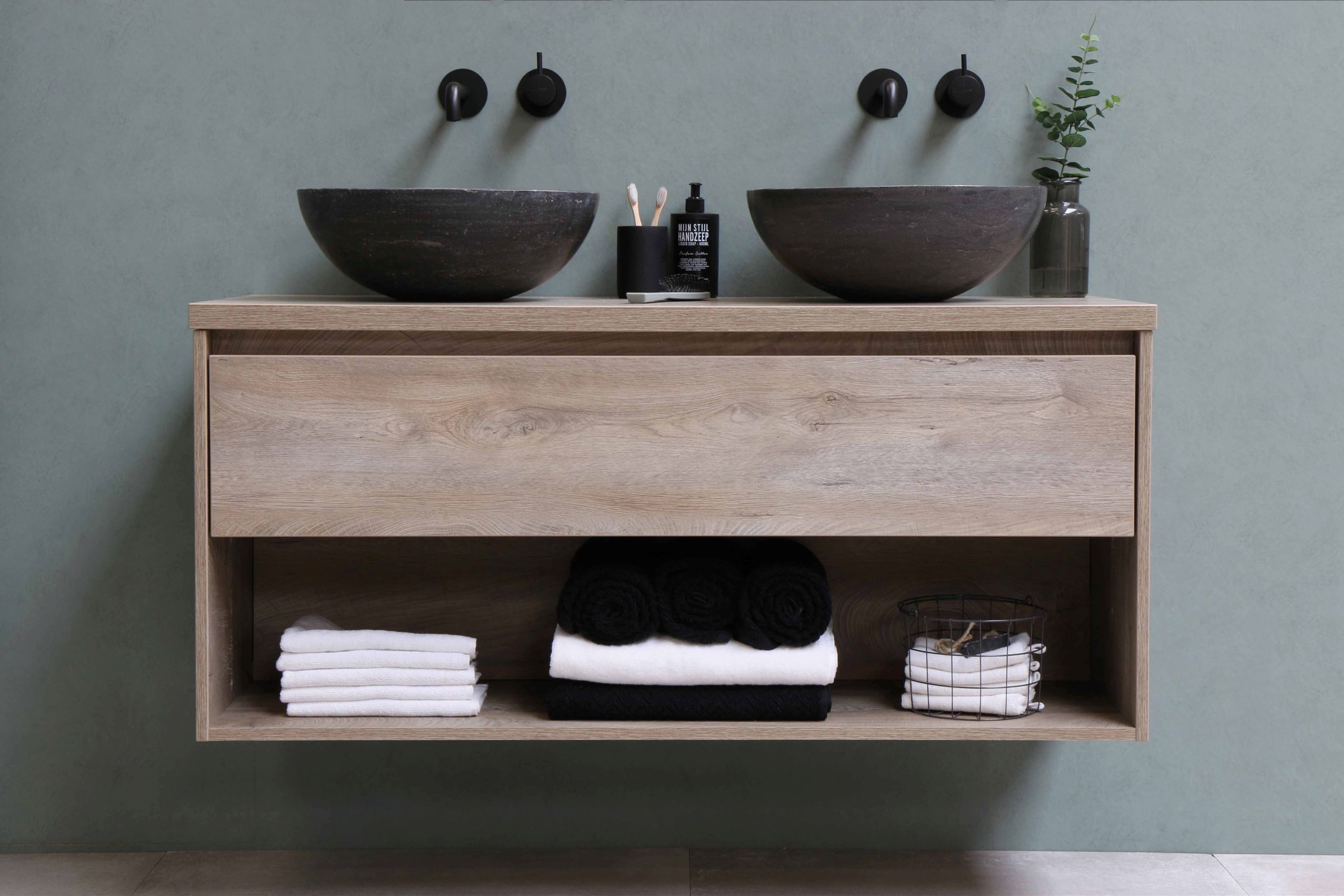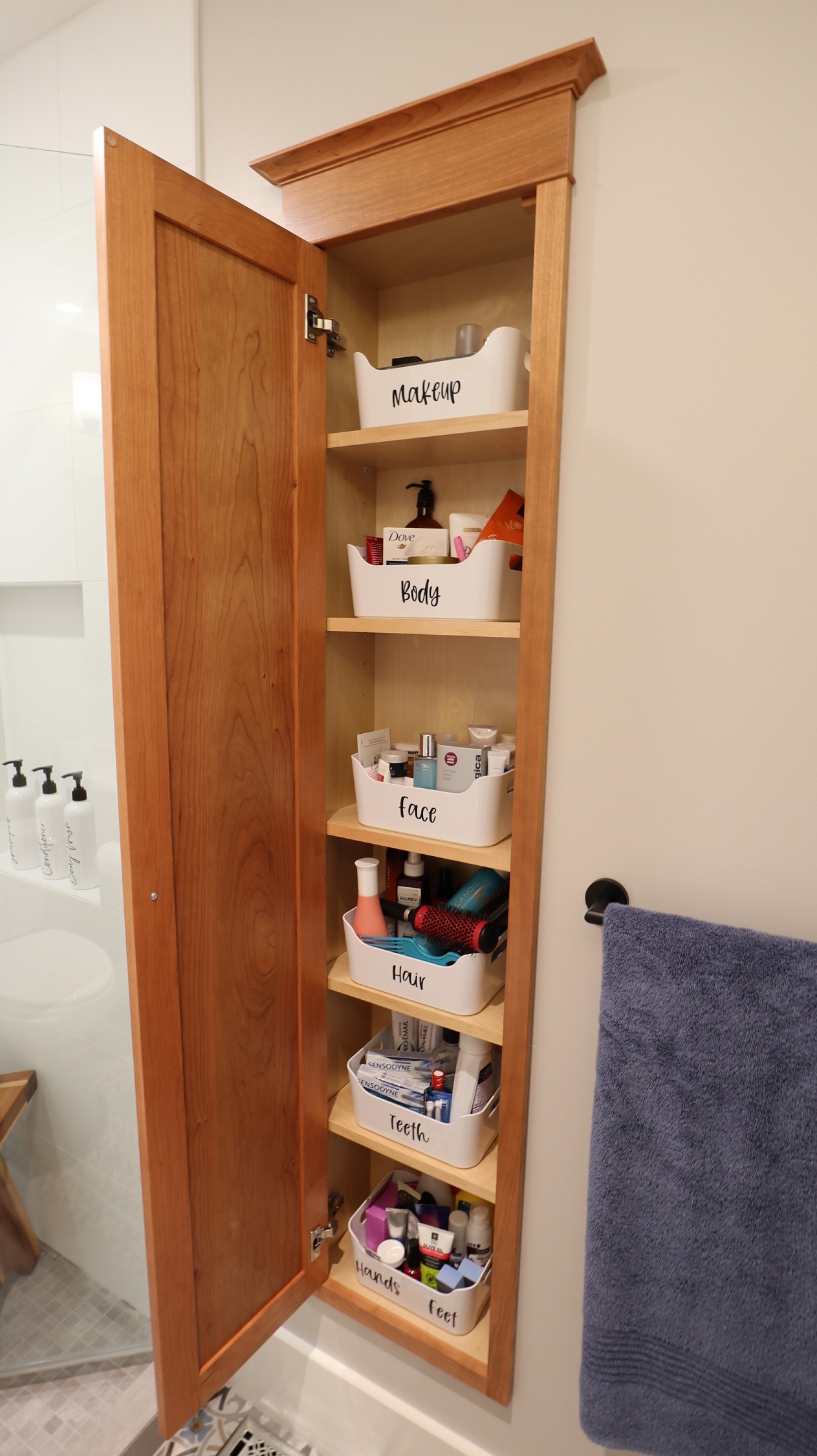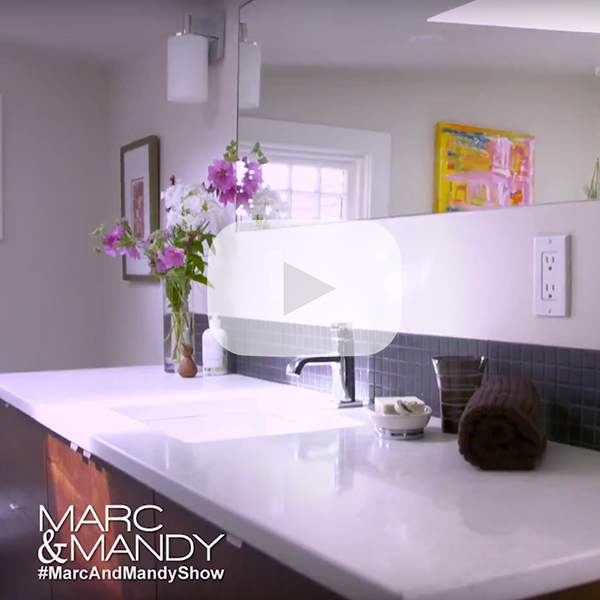This week I’m going to take you through one of the sexier elements of your bathroom, the cabinetry! Namely the vanities and storage units.
There are so many styles of cabinetry (cottage, farmhouse, modern farmhouse, craftsman, rustic, transitional, modern, French, Italian, Mediterranean). Overall, they all tend to fall into two main groups – Traditional and Contemporary. By now, after putting together your dream boards, you will most likely see the direction you’ll be headed. There are a multitude of ways you can personalize them to your needs.
Traditional cabinetry usually has more decorative elements and Contemporary/Modern cabinetry has cleaner, sleeker lines. Timeless design is usually a bit of a traditional/modern hybrid and doesn’t follow the trend of the day.
Three main categories of quality and construction to consider:
Modular/Big-Box
- Often flat packed with tools included to allow a homeowner to assemble the cabinet themselves.
- Cabinets only come in incremental sizes, usually 2”-3” from one size of cabinet to the next. At the end of the run or length of the wall there is often a wide gap that no cabinet will fill and you end up with a bit of wasted space and large filler panel.
- A good option if you are on a tighter budget is an all-in-one product. It will have the cabinet, countertop, and often the sink in the box (sometimes integrated, sometimes stand-alone). Just keep in mind you get what you pay for. The quality is often adequate for a lower traffic bathroom, but I’d hesitate to use one in a heavily used family bathroom.
Custom Modular
- These can be fairly customized in dimension but not their detailing. Basically, the fabrication is done in a production shop. They have their set way of doing things and for them to deviate, it’ll cost you.
Fully Customized
- As the name suggests, this option would allow anything and everything to be fully customized from dimensions to fine detailing.
- I’d think of it as furniture grade.
- The quality is top level.
Cabinetry 101
There are a few different construction styles that impact the fit and finish as well as price point. Doors and drawers can interact with the carcasses in different ways and how the cabinets are assembled.
The carcass is the box you see when you open your cabinet doors. It is comprised of a top, bottom, sides and back.
The assembly of the carcass for cheap mass-produced cabinetry is usually stapled, or pinned, often doesn’t include a back and really you get what you pay for here. Better quality and value production cabinetry is usually doweled & screwed together. Custom high quality usually uses more traditional styles of joinery – such as dados, rebates, tenons, biscuits, dowels. They are glued, clamped and screwed together.
Doors and drawers can be fitted onto the cabinetry in different ways:
- Full overlay
- Half overlay
- Inset
- Face frame
Full overlay is most common these days and is usually the best value for dollar. This means that the doors and drawers fully cover the carcass/frame components on the sides tops and bottoms.
Half overlay – is well let’s just say it – it’s weird and in our 20+ years no client has ever asked for it. It was pretty common in the ‘60s and ‘70s.
Inset is where the doors sit inside the carcass frame – think furniture style.
Face-frame is where there is a wider wood frame, usually 1-1/2”, that is attached to the carcass and then the door itself is inset into the frame. This is the most traditional style and also the most expensive.

Cabinetry is broken down into a variety of components:
Door/Drawer Styles
- Shaker style – traditional and contemporary
- Raised panel – very traditional – includes beaded profiles etc.
- Flat or slab panel – modern contemporary, budget-friendly
Carcass (cabinet interiors)
- Commonly white melamine – but other colours and wood grains exist too
- Pre-finished plywood. – often Maple or Birch
Drawer boxes
- Our preferred are solid Maple or Birch, dovetailed
- Plywood with locking joints
- Melamine – nailed and screwed
- Metal sided – little bit cheaper
Materials
- Wood comes in a variety of species and cuts: Cherry, Oak, Maple and Mahogany are pretty common ones, and you want to stay with something that is a bit harder to stand up to wear and tear vs a softer wood like Pine or Alder which dents easily and was all the rage for a distressed look in the 90’s
- The cut refers to how the tree was machined into planks and how the grain appears…basically how the log is milled or cut and at what angle to the centre of it.
- Flat or plain sawn – cathedrals pattern
- Rift cut – straight grain – Oak is popular in this cut right now vs the 1970’s Oak kitchen
- Quarter sawn – straighter grain as well but show rays or flecks
- Paint grade – usually on MDF
- Vinyl, thermofoil, laminate, often these materials can be high gloss to meet a uber modern aesthetic
Finish
- Paint – pros and cons
- Natural wood – clear/stained – pros and cons
- Thermofoil
- Laminate
Hardware
- European – self/soft closing, full extension slides – side mounted but standard is usually undermounted allowing the drawer box to be maximum width and so you don’t see any hardware when the drawer is open
- Traditional – butt hinges and wood-on-wood slides – primarily used in furniture and face-frame cabinetry
- Specialty – storage options abound – blind corner, pull-out pantries, drawer organization
- Decorative – knobs, handles, bin pulls
Regardless of what you choose for the style, finish and construction of your cabinetry, keep in mind what your storage needs are and how you will want to populate it.
Other Storage Options
Vanities are small units by nature, and most often there are a couple of doors under the sink and possibly a drawer below. They are often better than nothing but don’t necessarily function as well as we would like. If you have space for a double vanity, it’s common to see a set of drawers separating the two sinks or if there is really generous space you might see drawers flanking each end as well. In a larger bathroom, a tall storage unit for all those bulky items like Costco packs of toilet paper and towels can be helpful. Conversely, if you are tight for storage, and willing to pay for some customized cabinetry, you can utilize the stud bay space for a narrow unit. To make it look right it needs to be finessed a bit so you’ll want someone who has the skills for it.

Medicine cabinets are less requested these days but they do serve a good purpose if you are tight on space and usually incorporate a mirror as well. They can be mounted to the wall or nested into the stud space.
Note that for the nested cabinetry options that you’ll need to prepare for some carpentry work to reframe that opening as typical framing is 16” on centre spacing.
Personalizing Your Storage
We have had clients as us for various personalization detailing
- Hair dryer or curling iron cups in a pullout
- When the new vanity covers a heating vent due to a layout change, we’ll create a chase in the kick space and put the vent cover on the face of it to ensure the room can still be heated by the existing infrastructure
- Drawer pull-outs to accommodate the plumbing p-trap…this is usually done afterwards
Pro-Tip: Like I noted earlier, keep in mind your storage needs as you consider each cabinet and how you might populate them. After the cabinetry design is sorted, I suggest our clients actually write on the plans what they anticipate living where to be sure we haven’t overlooked anything.
Floating Vanities
I’m going to talk a bit about floating vanities for a moment here as they are quite popular and I often get asked about them. I don’t mind the look per se, but I think they are a bit of a pain to clean under and for any cabinetry that is floating, you’ll also need some additional back framing in the wall to help support it.
We often suggest that clients consider a hybrid option. Basically, we reduce the size of the kick to half or a third of the depth to allow easier cleaning and better support which I think is a great compromise.
To listen to the full episode and read the show notes, visit www.AllThingsRenovation.com or click on the Podcast tab at the top of our homepage at www.woodbeart.com.


